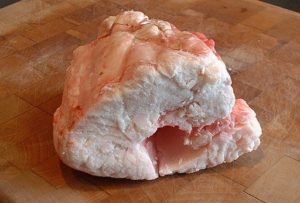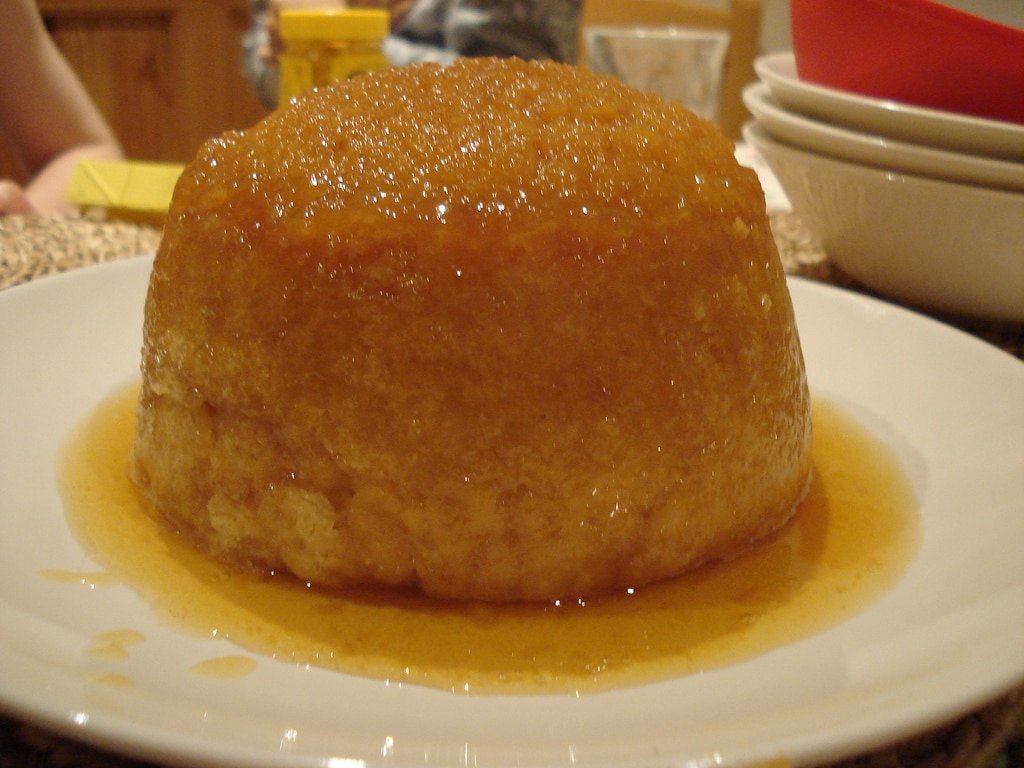
Recently chatting to an American friend, the topic of suet arose. Giving me an odd glance, she pointed to the suet cakes she hangs in her garden for the birds and asked what was so different about English suet? She was not expecting my reply: that it wasn’t for the birds, it was for me! That’s right, what is relegated to being wild bird food in the United States is actually a wonderfully useful ingredient.
Let’s start with the basics. Suet is congealed animal fat, more specifically beef or mutton fat and yes, that does mean that it is a saturated fat. (For vegetarians, there is now a non-animal suet available, made with palm oil and rice flour). Yet suet is so useful and truly makes a difference in recipes. What would steak and kidney pudding be without a suet-pastry crust?

The first mention of suet was in a cookbook dating from 1617. It was the key ingredient in a dish known as “Cambridge Pudding” which also contained dates, currants, sugar, and eggs. Through most of the 17th and 18th centuries, a boiled pudding consisting of suet mixed with spices and spinach juice was a popular dish. Although I shudder at the thought of such a “Green Pudding”, I remain forever thankful that cooks soon began to make a suet crust as an outer shell, to be stuffed with fruits or meats. Thus was born the steak and kidney pudding which is so dear to my own heart and stomach.
Today, more than 2,300 tons of suet are sold in Great Britain everyday! That’s over one million dumplings. Yet suet can be used for much more than dumplings or my beloved steak and kidney pudding. Use it in steamed jam roly poly, Eccles cakes, or Spotted Dick, or perhaps in something less traditional, such as caramel squares, goat cheese cobbler, or chili tostadas. Some excellent recipe ideas can be found at www.atora.co.uk, Atora being Britain’s best known suet manufacturer.
Here is a recipe to get you started with suet: good old treacle pudding (courtesy of Atora )
150g / 6 oz self-raising flour
75g / 3 oz suet
75g / 3 oz caster sugar
1 egg, beaten
Milk
Golden syrup
Mix the dry ingredients together, then add the egg, milk and any other liquid flavors (Golden Syrup, lemon juice, etc.). Mix to create a soft dough. Pour the dough into a 750ml/ 1 ½ pint bowl, cover with waxed paper and aluminum foil, and steam for 2 hours. Serve upturned on a plate, with warmed Golden Syrup drizzled over it.
Variations on this include adding currants for a Spotted Dick or for a more American flavor try adding maple syrup and walnuts.
Don’t be put off by the thought of what it is, or by the notion that it’s just for the birds. Suet is a key to many traditional British dishes so get some today.




2 thoughts on “Suet: What is it?”
Comments are closed.